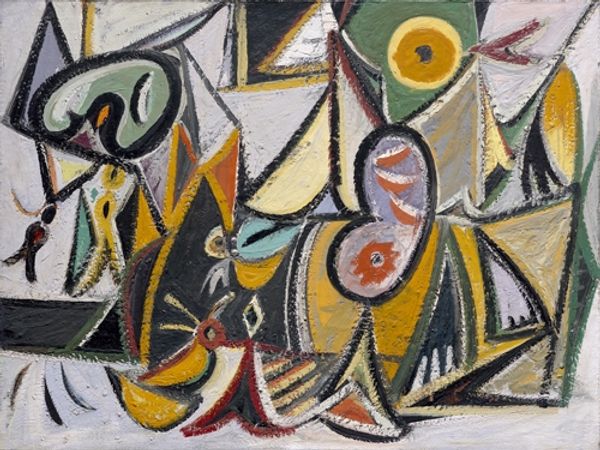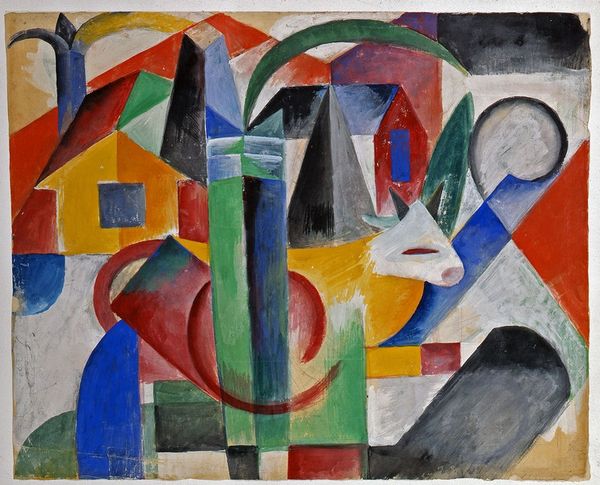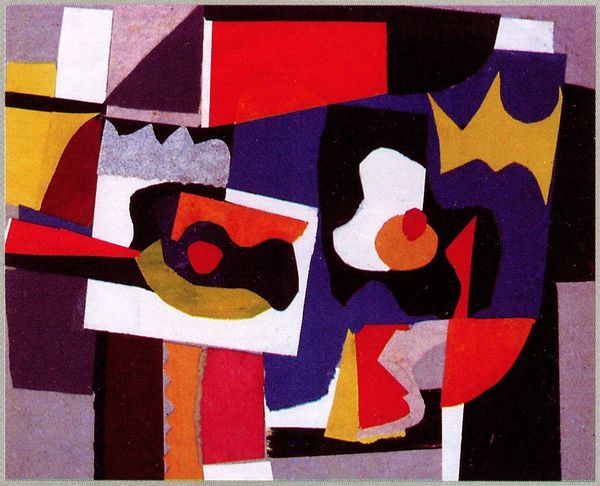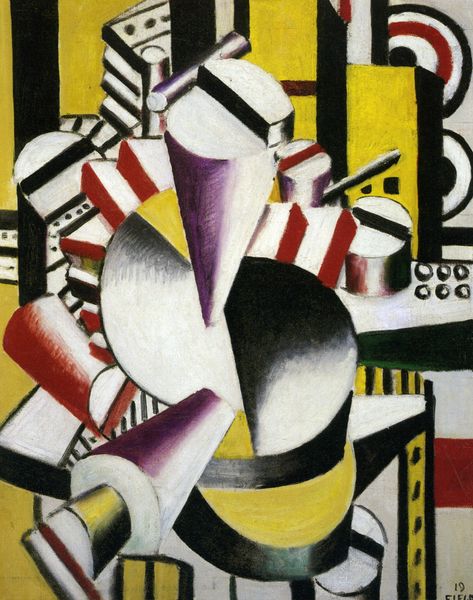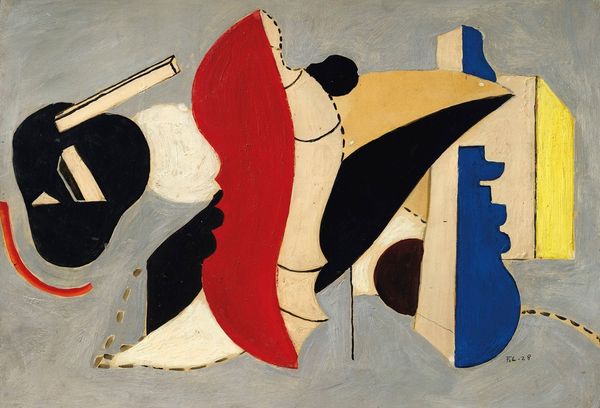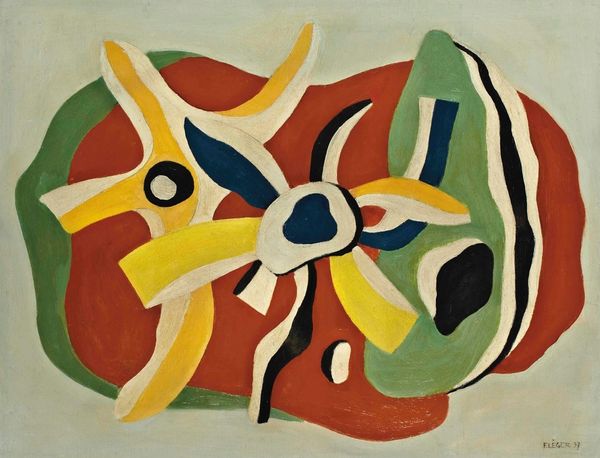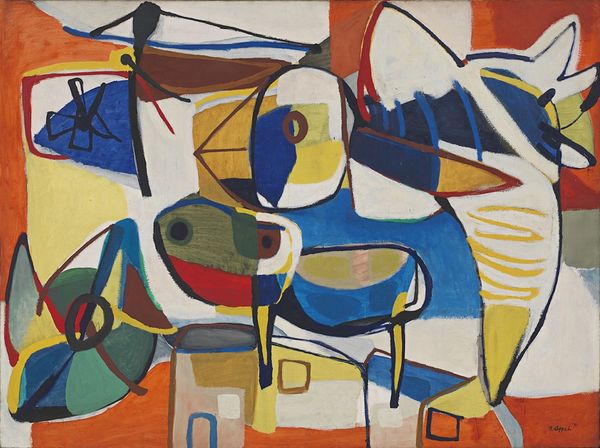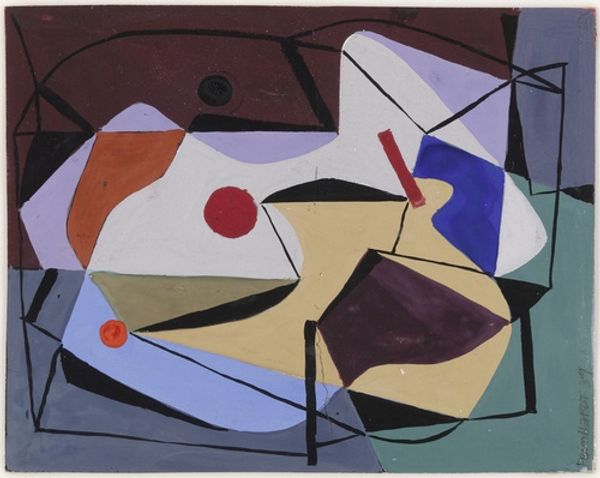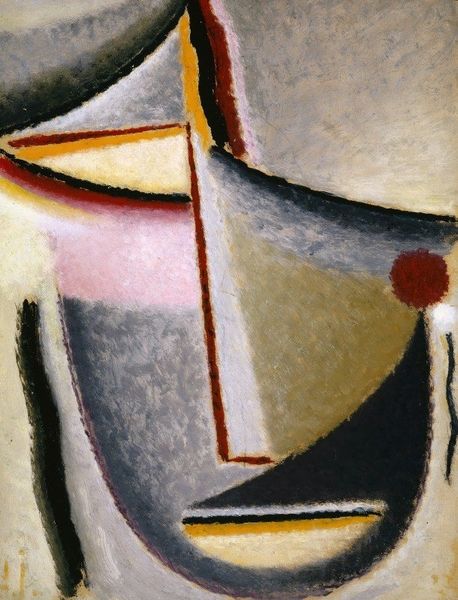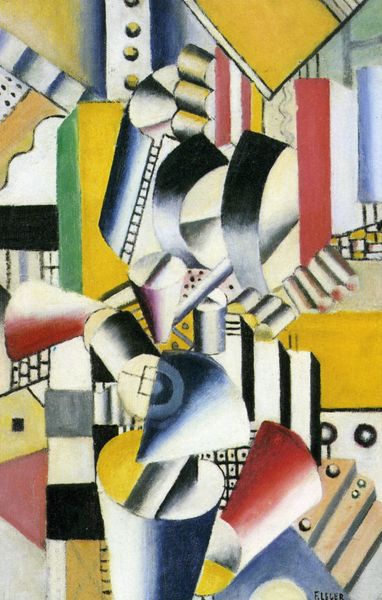
Copyright: Public domain
Editor: Here we have Arshile Gorky's "Painting" from 1937, rendered with oil on canvas. The forms feel both organic and geometric to me, existing in a strange, liminal space. What strikes you most when you look at it? Curator: The dialectical interplay between biomorphic and geometric forms is certainly key to Gorky's project here. Notice how he sets up these structural antagonisms through colour; how these pictorial devices structure and destabilize meaning; and how the paint is applied in such a way that its very materiality pushes against any singular, unified reading. Editor: So you're saying the tension *is* the point, structurally? It’s not about what the shapes represent, but how they relate? Curator: Precisely. Consider how Gorky uses line, too. Is it outlining a shape, defining its edge? Or is it functioning autonomously, disrupting our reading of figure and ground? Where does one form begin and another end? Semiotically, each of these shapes point to another signifier. Editor: That makes me think about abstract expressionism's broader project; the idea of art as an experience or encounter in itself. Curator: Indeed. One must consider, too, the modernist break with mimesis. Abstraction necessitates this precise kind of self-referentiality. What would it mean, within this painting, for a shape to *simply* be a shape? What kind of potential for disruption does this open up? Editor: This painting’s complexity and its invitation to self-reflection through visual experience have given me a new insight into Abstract Expressionism. Curator: And I have appreciated being made to rethink my reliance on accepted theory; there is always more to discover in even a familiar canvas.
Comments
No comments
Be the first to comment and join the conversation on the ultimate creative platform.
